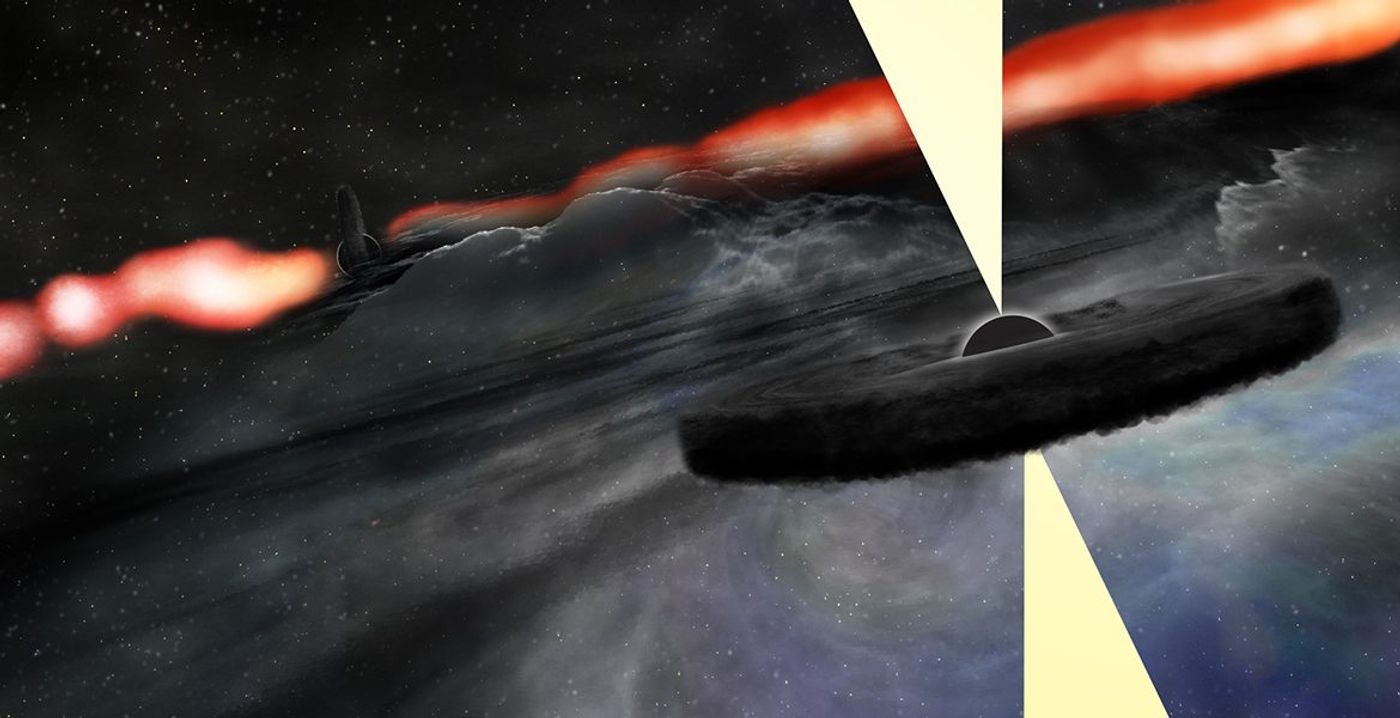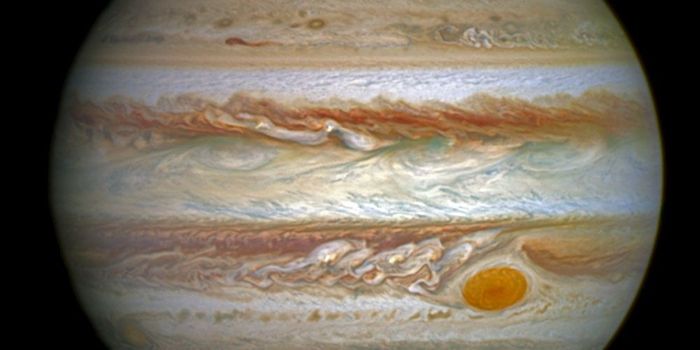Astronomers Find New Object Orbiting Cygnus A
Cygnus A is a famous radio galaxy found around 800 million light years away from Earth, and it's known for being one of the most powerful radio wave sources in the entire universe. A supermassive black hole at the center of this galaxy is getting a lot of attention in the astronomy community as of late after astronomers reportedly found something new orbiting around it.
Image Credit: Bill Saxton, NRAO/AUI/NSF
The first time astronomers took a solid look at Cygnus A with the National Space Foundation’s Very Large Array (VLA) was in 1984; they then look at it again in 1996, but in 2015, astronomers would use VLA once again to get a closer look thanks to some incredibly significant upgrades to the observatory that made its viewing power much stronger. The findings have been accepted for publication in The Astrophysical Journal.
Related: This black hole has been munching on a star for over a decade; a new record
The two decades that passed apparently meant some big changes for Cygnus A, as the new images captured during re-observation revealed a large and luminous object orbiting the supermassive black hole that wasn’t there in the original observations in the 80’s, nor was it spotted in any of the re-observations made in the 90’s.
Related: Astronomers observe as a black hole 'burps' gasses
“The VLA images of Cygnus A from the 1980s marked the state of the observational capability at that time,” said Rick Perley, of the National Radio Astronomy Observatory (NRAO). “Because of that, we didn’t look at Cygnus A again until 1996, when new VLA electronics had provided a new range of radio frequencies for our observations.”
“However, the VLA’s upgrade that was completed in 2012 made it a much more powerful telescope, so we wanted to have a look at Cygnus A using the VLA’s new capabilities,” Perley continued, indicating that the event took place sometime after 1996 and before the final upgrades to VLA.

Image Credit: Perley, et al., NRAO/AUI/NSF, NASA
Considering just how bright the object was when it was finally observed, astronomers predicted that it was either a class of supernova or another black hole emitting luminous outbursts, with the latter being the most likely since it has been this bright for too long to be considered a supernova.
It could be a second supermassive black hole at the center of the galaxy that’s just slightly smaller than the big daddy of supermassive black holes at the center of Cygnus A. If this is the case, the two might just be the closest-ever supermassive black holes in relation to one another ever discovered and they may drift into each other in the distant future.
Related: Soon, we'll get to see what a black hole actually looks like
It should be interesting to see what kinds of information future observations of Cygnus A will bring, as they could shed some light on what’s really going on in this mysterious galaxy.
Source: National Radio Astronomy Observatory via Phys.org









